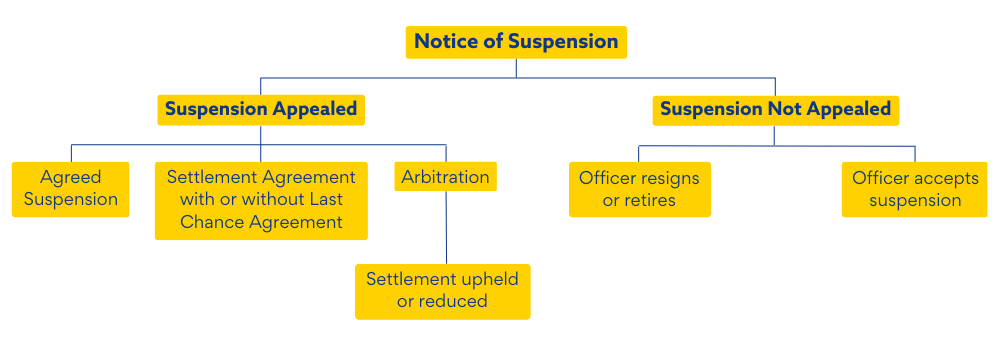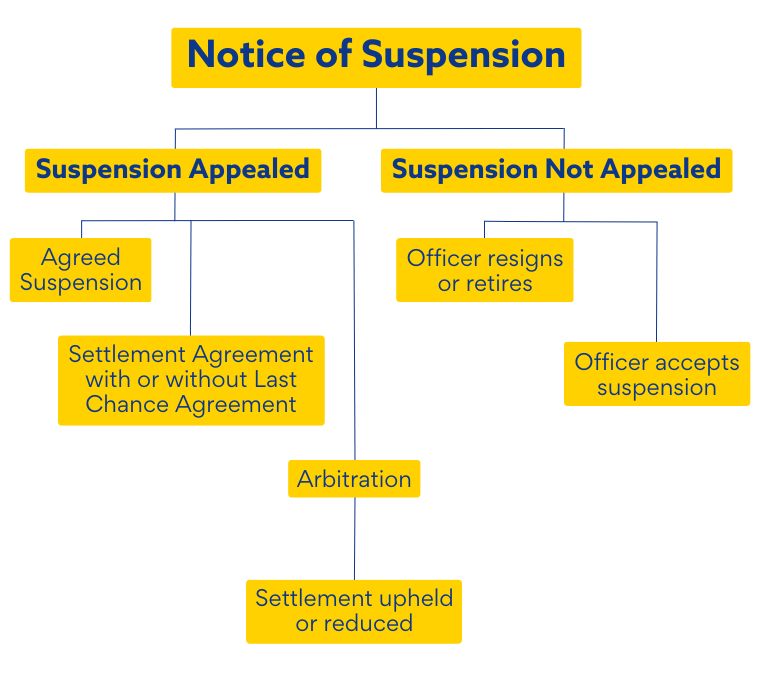
Police chiefs are often forced to put officers fired for misconduct back on the streets – Washington Post
Departments have had to take back hundreds of officers over the past decade after appeals required by union contracts. [from Washington Post]

Departments have had to take back hundreds of officers over the past decade after appeals required by union contracts. [from Washington Post]

A recent investigative series by the KSAT 12 Defenders, “Broken Blue,” looks into why officers involved in some of SAPD’s most notorious firings were… [from

Texas’ approach to regulating law enforcement is toothless. [from New Braunfels Herald-Zeitung Online]

San Antonio police officers accused of violating the department’s body-worn camera policy are rarely suspended, a months-long investigation by the KSAT 12 Defenders found. [from

Across 13,394 employees, the city of San Antonio paid a total of $842 million in wages and $1.2 billion in total compensation to fire, police

In the past decade, arbitrators have overturned 10 San Antonio Police Department firings, allowing cops accused of serious wrongdoing to stay on the force. [from
This Officer Suspension Dashboard has been created as an effort to offer further transparency to the public about the conduct of San Antonio Police Department (SAPD) officers. We have collected suspension and arbitration documents from 2010-2023, and will be updating our data frequently. It should be noted that we have inputted all the data we have received but there may be some suspensions not represented. Additionally, this dashboard does not include suspensions issued for purely attendance based violations.
This dashboard will serve as a “watchdog” for officers that violate laws and departmental policies. Not only will it alert the community, but will be a tool to hold officers accountable and be a deterrent for bad behavior, and assist smaller law enforcement agencies in making good hiring choices, to reduce the issue of “wandering officers.” It is our hope at ACT 4 SA that this dashboard will help highlight disciplinary loopholes in our police contract that allow for the rehiring of fired officers. Finally, any trends from this data will better inform training practices for law enforcement agencies on de-escalation, cultural sensitivity, mental health training, hiring practices, and more.
You can search this dashboard by officer name, incident type, disciplinary outcomes, or view indefinite suspension data.
It is our full intent to add other local departments, such as the Bexar County Sheriff’s Office and the Bexar County Constables in the near future. We were unable to include them in this version of the dashboard because many of their documents are not digitized. We will work to include data from other Texas police departments such as Austin Police Department, El Paso Police Department, and other Texas sheriff’s departments.
This dashboard was a project funded by the Catalyst Grant offered by the Urban Institute and Microsoft Justice Reform Initiative. We would like to thank the Microsoft team, Urban Institute, and our data leads Brittany Sharp and James Dykman for working tireless hours to make this project a reality!
SAPD data has been received through Open Records Requests (ORR) from the City of San Antonio and from SAPD’s data and transparency page.
The most common officer misconduct were improper use of government property or time (this includes violations like officer involved car accidents, using confidential police information for personal reasons, and remaining on a call for service for longer than necessary), responsibility to serve the public (this is a wide ranging category that includes violations like using profane and derogatory language, being rude to civilians, and general bad behavior) the use of body camera or in car camera violations, and duty to take action/report crimes violations respectively.
It should be noted that 30 arbitrations (15.38% of all police firings) have yet to be determined, as there is a backlog due to COVID-19.
50.26% of all firings resulted in an officer being reinstated, excluding the arbitrations yet to be determined that number increases to 64.05%.


An officer is placed on unpaid leave for a given period of time.
An officer has been fired.
The officer agrees to the suspension given to them. They can either agree to the full term of the suspension or sometimes agree to reduce the suspension, but not appeal it.
Use of an outside lawyer (known as an arbitrator) to settle a dispute, such as appealing a firing or suspension. Arbitrators will review an entire disciplinary case and make a decision to sustain, reduce, or reverse an officer’s suspension/indefinite suspension.
This is an agreement between an officer and the chief of police to reduce an officer’s indefinite suspension. By the time a settlement agreement is made, most officers have spent time on unpaid leave for their indefinite suspension. Officers may receive back pay if the reduced suspension is shorter than the time they have spent on unpaid leave.
This is an extension of a settlement agreement. Under this agreement, an officer must agree to certain conditions of re-employment, including training and supervision. Should the agreement be violated by the officer, that officer will be indefinitely suspended and can appeal their discipline to arbitration.
Types of incidents that did not fit into other categories and were not common enough to have their own category. These types of incidents include making off duty traffic stops, vehicle pursuit violations, improper handling of evidence, various violations regarding administrative tasks and failure to arrest, issue a citation or run a drivers license check.
Do you have a suggestion for how to improve the Officer Suspension Dashboard? Let us know! Provide your input below. We are continuously working to make the dashboard more informative for our community.